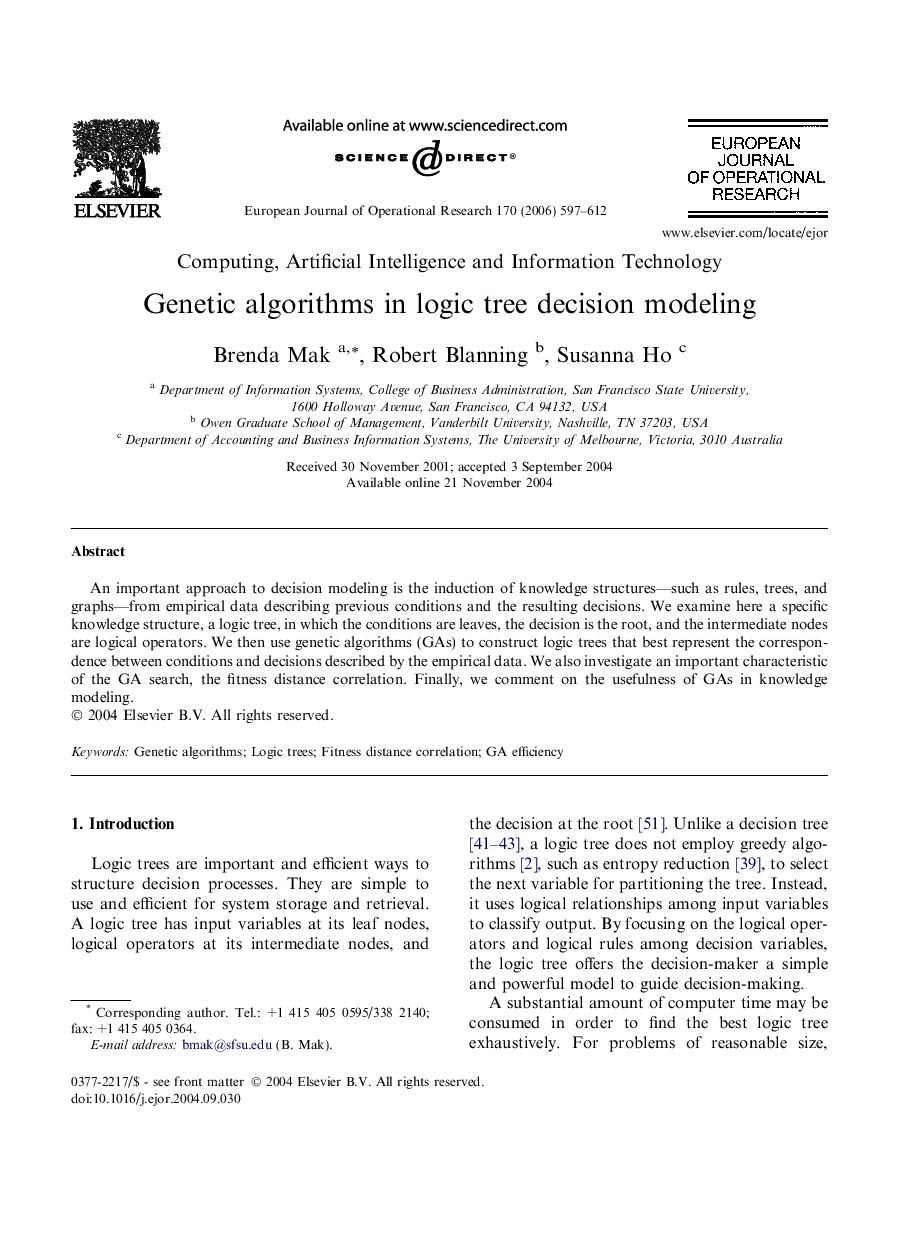| Article ID | Journal | Published Year | Pages | File Type |
|---|---|---|---|---|
| 482967 | European Journal of Operational Research | 2006 | 16 Pages |
Abstract
An important approach to decision modeling is the induction of knowledge structures—such as rules, trees, and graphs—from empirical data describing previous conditions and the resulting decisions. We examine here a specific knowledge structure, a logic tree, in which the conditions are leaves, the decision is the root, and the intermediate nodes are logical operators. We then use genetic algorithms (GAs) to construct logic trees that best represent the correspondence between conditions and decisions described by the empirical data. We also investigate an important characteristic of the GA search, the fitness distance correlation. Finally, we comment on the usefulness of GAs in knowledge modeling.
Keywords
Related Topics
Physical Sciences and Engineering
Computer Science
Computer Science (General)
Authors
Brenda Mak, Robert Blanning, Susanna Ho,
